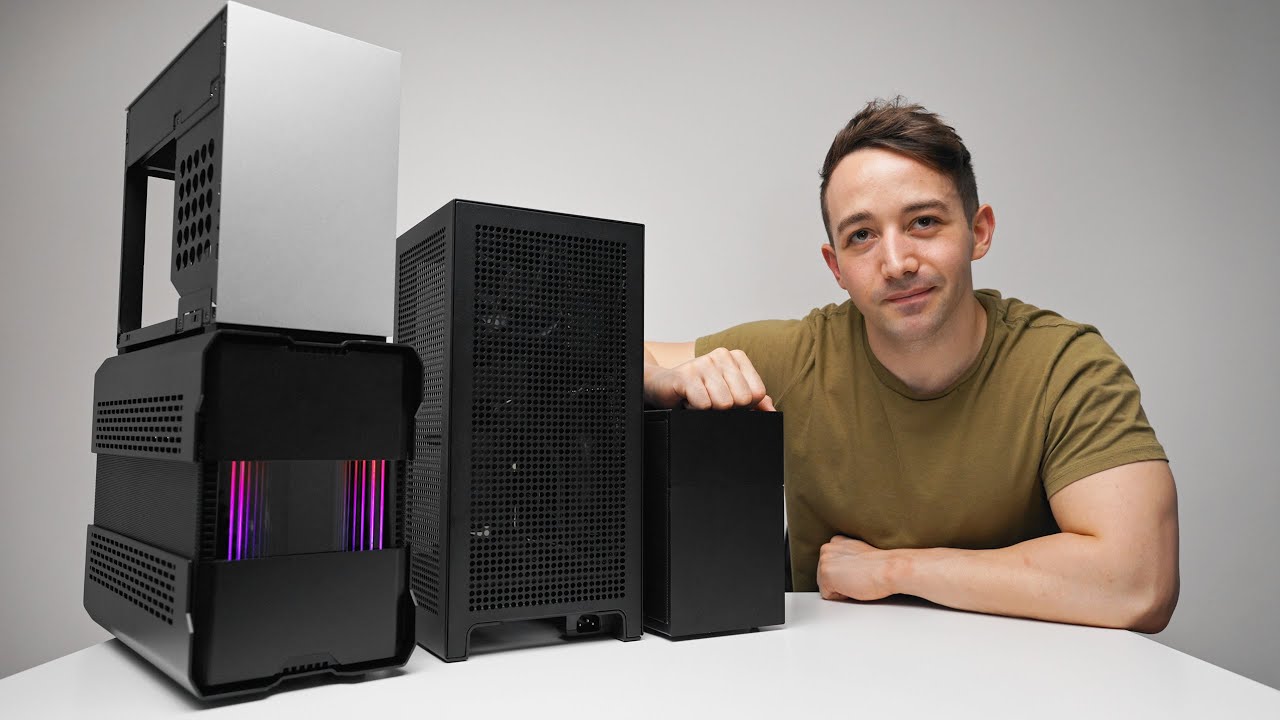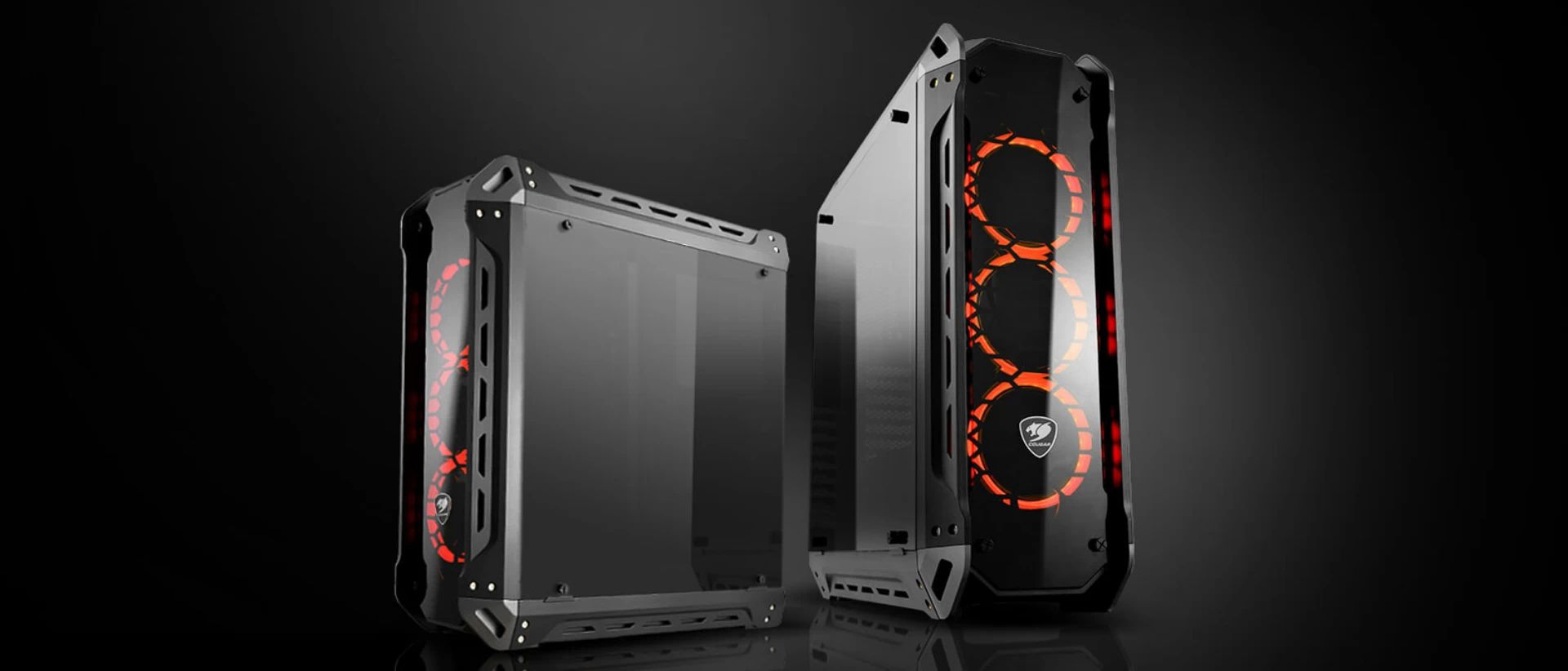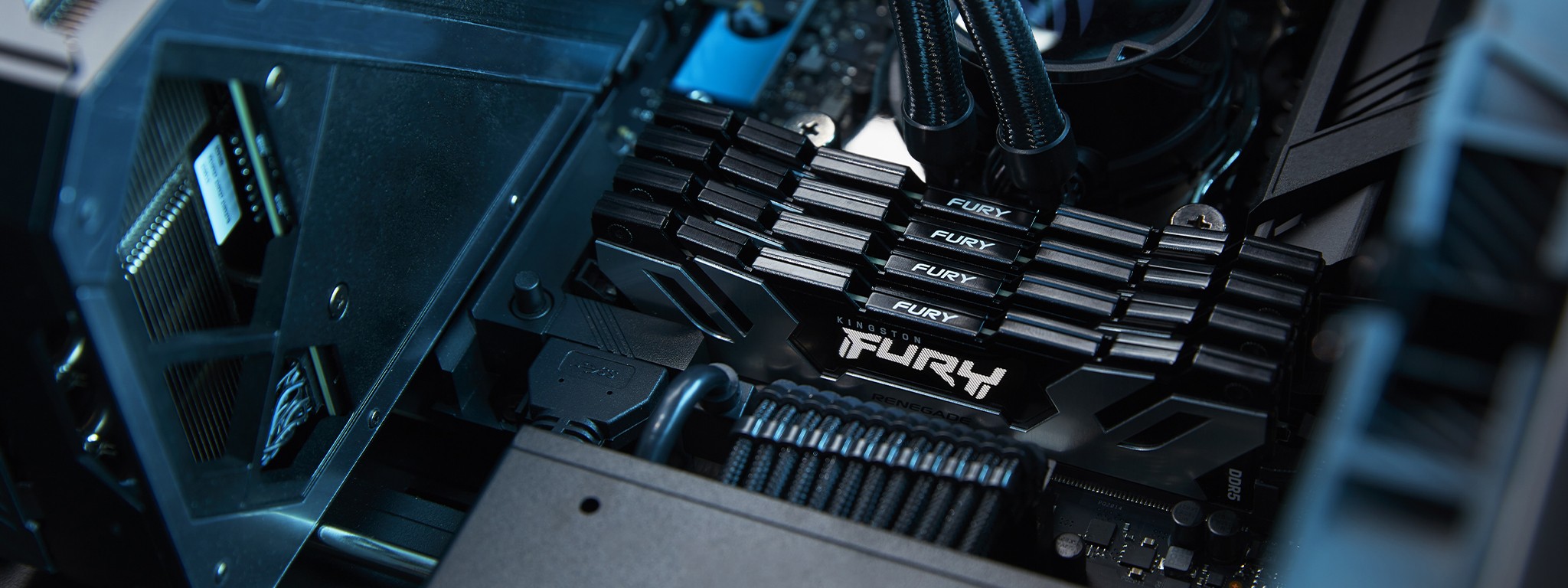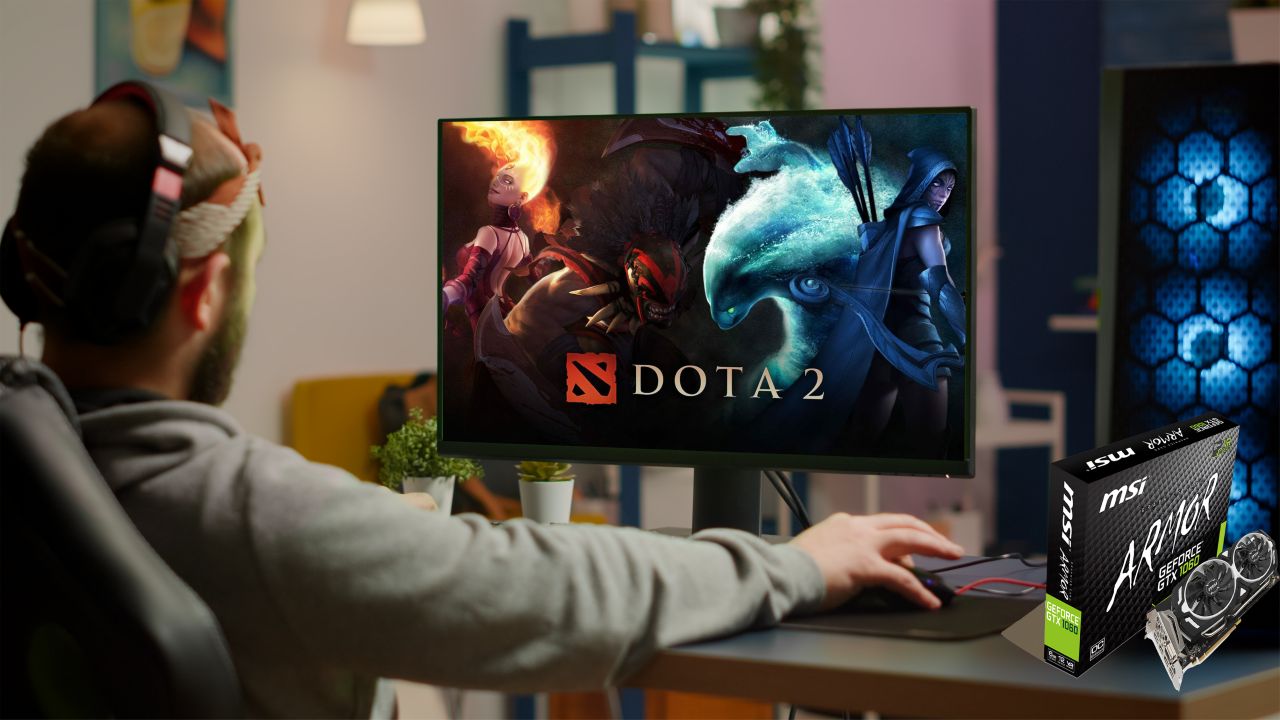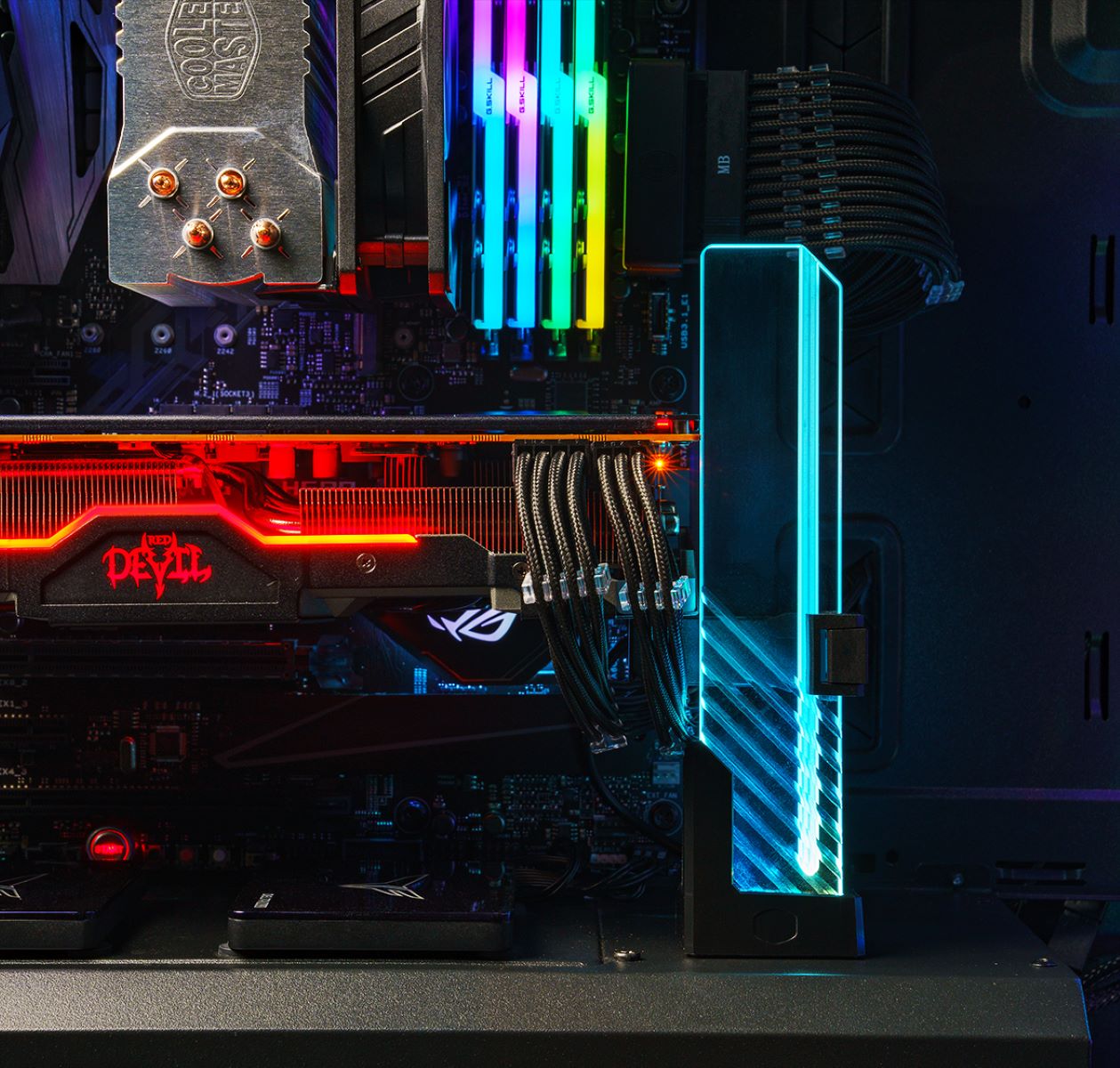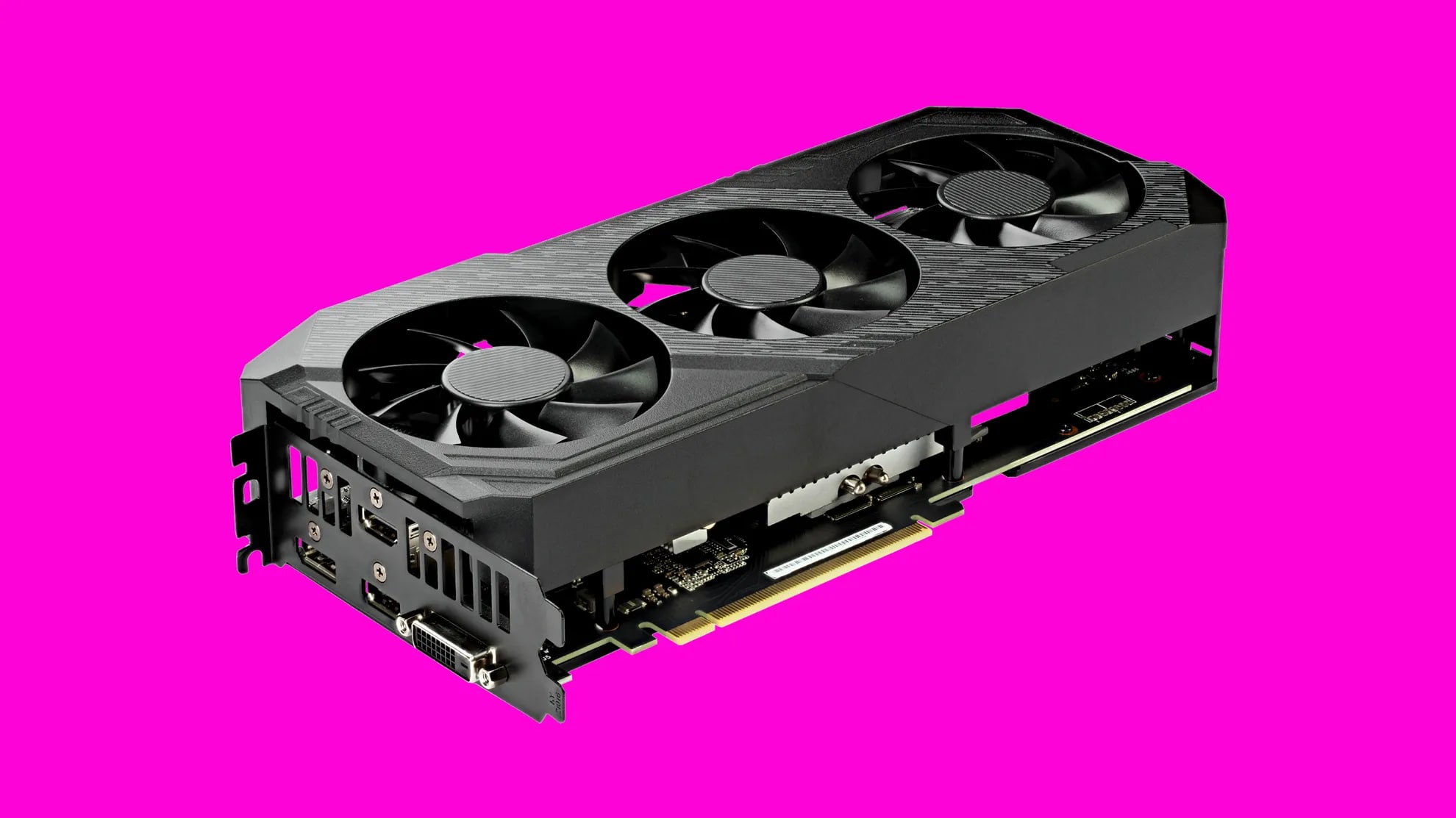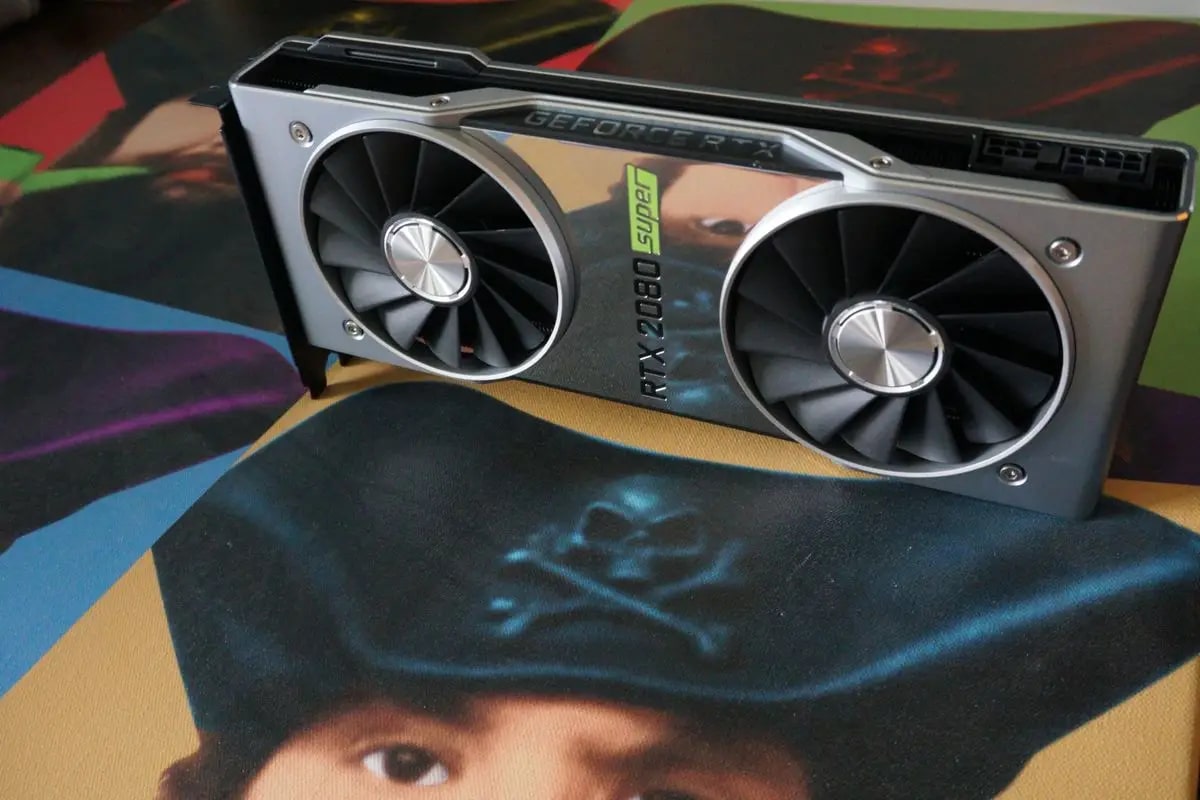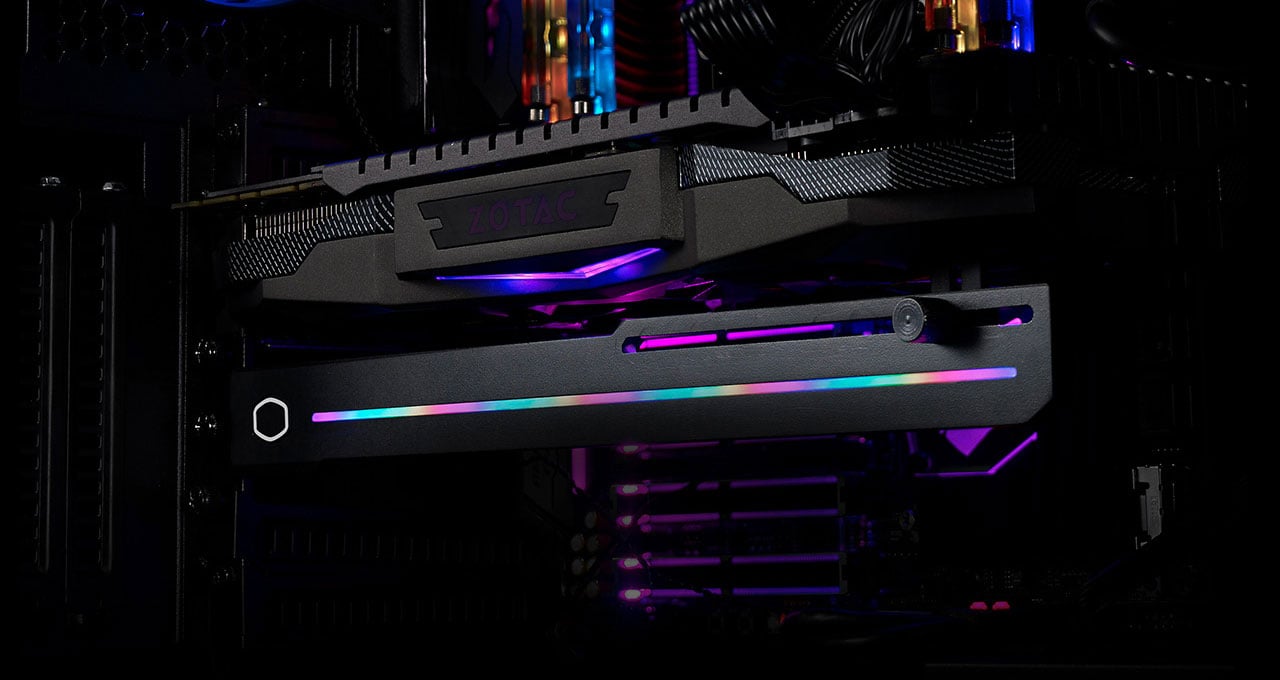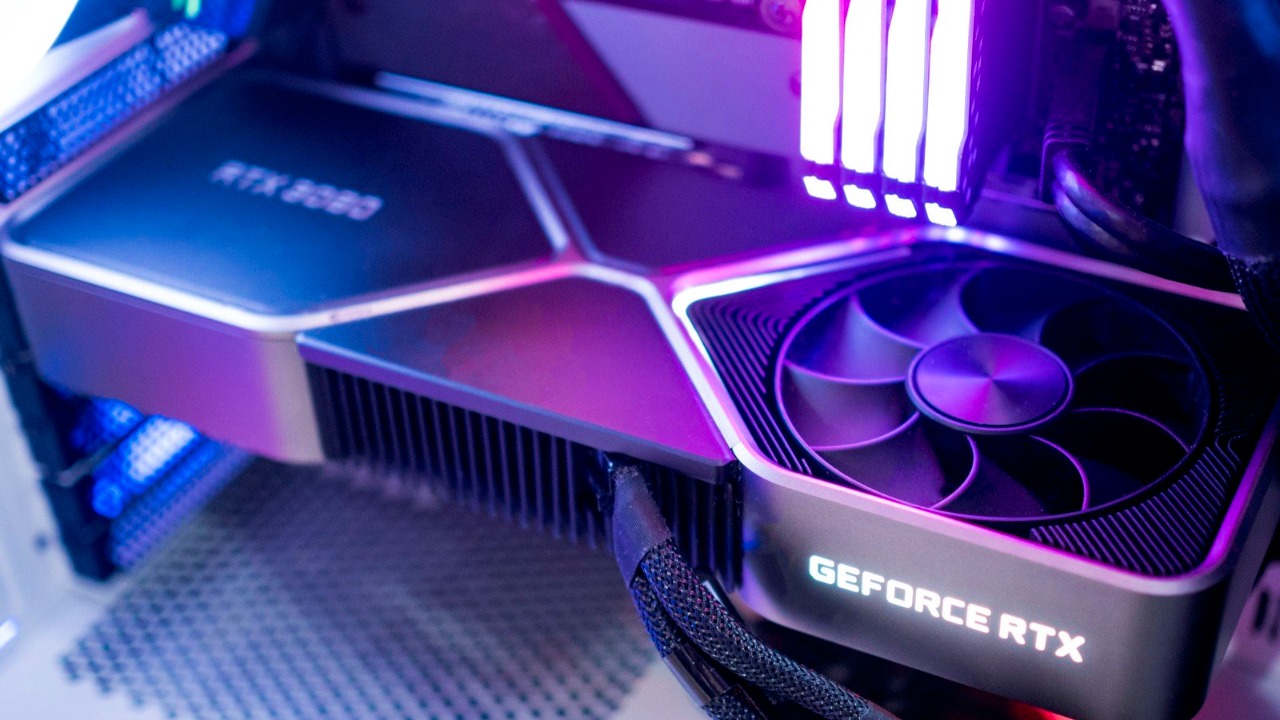Introduction
Welcome to our guide on how to determine if a graphics card will fit in your case. Whether you’re a gamer looking to upgrade your system or a computer enthusiast building a new rig, it’s crucial to ensure compatibility between your chosen graphics card and your case. Installing a graphics card that is too large for your case can lead to performance issues, overheating problems, and even physical damage to your components.
Before we delve into the specifics of checking compatibility, let’s briefly discuss why it’s important. The graphics card, also known as a GPU (Graphics Processing Unit), is a vital component responsible for rendering images, videos, and visual effects on your computer. Different graphics cards come in varying sizes, and not all cases are designed to accommodate every size. Therefore, it’s crucial to consider this aspect before making a purchase.
In this guide, we will explore the factors you should consider before checking compatibility, learn how to measure the available space in your case, examine the clearance with other components, and explore the differences between single fan and multiple fan graphics cards. We will also address additional considerations for slim or small form factor cases.
By the end of this guide, you will have a clear understanding of how to determine if a graphics card will fit in your case. So, let’s dive in and unravel the mysteries of compatibility!
Factors to Consider Before Checking Compatibility
Before we jump into measuring the dimensions of a graphics card and the available space in your case, there are several crucial factors you should consider. These factors will help you narrow down your options and ensure a seamless fit for your graphics card:
1. Case Size: Take note of the form factor of your case, such as ATX, Micro-ATX, or Mini-ITX. Larger cases generally have more space for larger graphics cards, while smaller form factor cases might have restrictions on card length and height.
2. Power Supply: Graphics cards require adequate power delivery for optimal performance. Check the power supply unit (PSU) in your case to ensure it has the necessary power connectors and wattage to support the graphics card you are considering.
3. PCIe Slot: Determine the available PCIe slot on your motherboard. Most modern graphics cards use a PCIe x16 slot, but it’s essential to confirm that your motherboard has this slot and that it’s not obstructed by other components.
4. Cooling Solutions: Consider the cooling solutions in your case, such as fans or liquid cooling setups. Graphics cards generate heat during operation, so ensuring proper airflow and ventilation is crucial to avoid overheating.
5. Budget: Determine your budget for a graphics card. Different models and brands offer various performance levels and price points. It’s important to strike a balance between your budget and the features you desire.
By considering these factors, you can narrow down your options and ensure compatibility between your graphics card and the rest of your system. Now that we’ve covered the important pre-check factors, let’s move on to measuring the dimensions of a graphics card and the available space in your case.
Checking the Graphics Card Length
One of the essential steps in determining if a graphics card will fit in your case is to check its length. Graphics cards come in various lengths, ranging from compact models to longer high-performance options. Here’s how you can check the length of a graphics card:
1. Consult the Manufacturer: The easiest way to find the length of a graphics card is to consult the manufacturer’s specifications. Visit the manufacturer’s website or product page to find detailed information about the graphics card’s dimensions.
2. Measure the Actual Card Length: If you already have the graphics card or have access to it, you can measure its length manually. Use a tape measure or ruler to measure the distance from the backplate to the tip of the graphics card. Note down the measurement in millimeters (mm) or inches.
3. Consider the Mounting Bracket: Remember to account for the length of the mounting bracket when measuring the overall length of the graphics card. The mounting bracket is the metal piece at the back of the graphics card that connects it to your motherboard.
4. Check the Specifications of Your Case: After determining the length of the graphics card, compare it to the maximum allowed length specified by your case manufacturer. This information can usually be found in the case’s manual or on the manufacturer’s website. Ensure that your chosen graphics card’s length does not exceed this maximum allowance.
By checking the length of a graphics card and comparing it to the maximum allowed length of your case, you can determine if it will fit comfortably without any clearance issues. In the next section, we will explore how to measure the available space in your case.
Measuring the Available Space in the Case
Once you have determined the length of the graphics card, the next step is to measure the available space inside your case. This will help you ensure that there is enough room to accommodate the graphics card without any hindrance. Here’s how you can measure the available space:
1. Open Your Case: Start by opening the side panel of your computer case. This will give you access to the internal components and allow you to accurately measure the available space.
2. Identify the Target Area: Locate the area where the graphics card will be installed. This is usually the PCIe slot area, located toward the back of the case.
3. Measure Length and Width: Using a tape measure or ruler, measure the distance from the back of the case to any obstructions that may limit the length of the graphics card. Take note of the measurement in millimeters (mm) or inches. Repeat this process for the width of the target area as well.
4. Account for Clearance: In addition to measuring the distance, consider any clearance requirements specified by the manufacturer. Some graphics cards may need extra clearance due to the presence of fans or large heatsinks. Make sure you have enough space to accommodate these additional requirements.
5. Check for Other Obstructions: Take note of any potential obstructions within the target area, such as cables, SATA connectors, or other components. Ensure that the installation of the graphics card will not interfere with these elements.
By accurately measuring the available space in your case, including length, width, and considering clearance requirements, you can determine if there is enough room to install the graphics card. In the next section, we will discuss considerations for double-slot graphics cards.
Considering Double-Slot Graphics Cards
When choosing a graphics card, you may come across the term “double-slot.” This refers to the physical size of the graphics card and its impact on the adjacent PCIe slots on your motherboard. Here’s what you need to know about double-slot graphics cards:
1. Definition: A double-slot graphics card refers to a card that takes up two expansion slots on your motherboard. This is due to the increased width required to accommodate larger heatsinks, cooling fans, or other components.
2. Impact on PCIe Slots: Installing a double-slot graphics card will occupy the slot it is inserted into, as well as the slot directly below it. This means that if you have other expansion cards or devices occupying adjacent slots, they may need to be relocated or removed to make room for the graphics card.
3. Checking Motherboard Documentation: Consult the documentation or specifications of your motherboard to determine the available PCIe slots and their spacing. Ensure that you have enough space not only for the double-slot graphics card but also for any other expansion cards or devices you plan to use simultaneously.
4. GPU Cooler Design: Consider the type of cooler design on the graphics card. Some double-slot cards have coolers that blow air directly onto the graphics card, whereas others exhaust hot air out of the case. Depending on your case’s airflow and cooling setup, choose a cooler design that best suits your needs.
5. Compatibility with Case: Verify that your case has enough clearance to accommodate the width of a double-slot graphics card. Some slim or small form factor cases may not have enough space to fit these larger cards, so be sure to check the case specifications beforehand.
By considering these factors, you can determine if a double-slot graphics card is compatible with your motherboard and case. If you have the necessary space and PCIe slots available, a double-slot card can provide enhanced cooling and performance capabilities. In the next section, we will discuss checking for clearance with other components.
Checking for Clearance with Other Components
When installing a graphics card, it’s essential to verify that there is enough clearance with other components in your system. This ensures that the graphics card can be properly installed without any interference. Here’s how you can check for clearance:
1. CPU Cooler: If you have a large CPU cooler installed, check if it overlaps with the area where the graphics card will be inserted. Some CPU coolers have tall heatsinks that may collide with the graphics card, obstructing its installation. Make sure there is enough clearance between the CPU cooler and the graphics card.
2. RAM Slots: Check the proximity of the RAM (Random Access Memory) slots to the target area. In some cases, the height of the graphics card or its cooling solution may conflict with the adjacent RAM slots. Ensure that there is enough space for both the graphics card and the RAM sticks.
3. Drive Bays: If your case has drive bays located near the graphics card area, check if there is enough clearance between the graphics card and any installed storage drives. Larger graphics cards, especially those with extended PCBs (Printed Circuit Boards), may interfere with the drive bays or cables connected to them.
4. Cables and Connectors: Take note of the position of cables and connectors inside your case. Make sure they will not impede the installation of the graphics card or obstruct the airflow once it is installed. Rearrange or reposition cables if necessary to ensure proper clearance.
5. Expansion Slots: If you have other expansion cards, such as sound cards or network cards, installed in adjacent slots, consider their positioning in relation to the graphics card. Ensure that there is enough space for all the cards without any overlap or obstruction.
By checking for clearance with other components, you can avoid any potential conflicts or issues during the installation of the graphics card. This will help ensure a smooth and trouble-free integration of the graphics card into your system. In the next section, we will explore the differences between single fan and multiple fan graphics cards.
Choosing Between Single Fan and Multiple Fan Graphics Cards
When selecting a graphics card, one of the decisions you may need to make is choosing between a single fan or multiple fan design. The fan configuration on a graphics card plays a crucial role in cooling and performance. Here are some factors to consider when deciding between a single fan and multiple fan graphics card:
1. Cooling Efficiency: Multiple fan graphics cards generally offer better cooling efficiency compared to single fan designs. The additional fans help dissipate heat more effectively, keeping the graphics card cooler during intensive tasks and prolonged gaming sessions.
2. Noise Level: Take into account the noise level produced by the fans. Multiple fan graphics cards tend to run quieter than their single fan counterparts. The workload is distributed across multiple fans, allowing them to run at lower speeds and generate less noise.
3. Case Airflow: Consider the airflow dynamics within your case. If you have ample airflow from case fans or liquid cooling systems, a single fan graphics card may be sufficient. However, if your case has limited airflow or higher ambient temperatures, a multiple fan configuration can help maintain lower GPU temperatures.
4. Power Consumption: Multiple fan graphics cards typically consume more power compared to single fan designs. This increased power consumption is attributed to the additional fans and their requirement for adequate cooling. Ensure that your power supply unit can handle the power demands of your chosen graphics card.
5. Case Compatibility: Verify that your case has enough space and clearance to accommodate the size and length of the graphics card, considering the additional bulk of multiple fan designs. Some smaller cases or slim form factor cases may have limitations in fitting larger, multiple fan graphics cards.
Choosing between a single fan and multiple fan graphics card ultimately depends on your specific needs, budget, and case airflow. Multiple fan designs excel in cooling performance, lower noise levels, and higher power consumption, while single fan configurations are more suitable for smaller cases or cases with robust overall airflow. Assess your requirements and make an informed decision based on these factors.
In the next section, we will discuss additional considerations for slim or small form factor cases.
Additional Considerations for Slim or Small Form Factor Cases
When dealing with slim or small form factor cases, there are a few extra considerations to keep in mind when selecting a graphics card. These compact cases often have limited space, so it’s crucial to choose a graphics card that fits within the constraints of your case. Here are some additional factors to consider:
1. Low Profile Graphics Cards: Slim cases usually require low-profile graphics cards that have a shorter height. These cards are specifically designed to fit into smaller cases without obstructing other components. Make sure to check for low-profile options if you have a slim form factor case.
2. Length Restrictions: Slim cases often have restrictions on the maximum length of the graphics card that can be installed. Measure the available space in your case and cross-reference it with the length specifications provided by the manufacturer. Ensure that the graphics card you choose fits within these length restrictions.
3. Power Consumption: Consider the power requirements of the graphics card and ensure that your power supply unit can handle the load. Slim cases typically have limited space for larger power supply units, so make sure to choose a graphics card that is energy-efficient and compatible with your available power supply.
4. Heat Dissipation: With limited space for airflow and cooling solutions, heat dissipation becomes critical in slim cases. Look for graphics cards that have efficient cooling systems, such as custom heatsinks or fans, to ensure that your graphics card remains adequately cooled even in confined spaces.
5. PCIe Slot Positioning: Verify the positioning of the PCIe slot in your slim case. Some slim form factor cases may have differently positioned or angled slots that restrict the type or size of graphics cards that can be installed. Ensure compatibility by double-checking the alignment and orientation of the slot.
By considering these additional factors specific to slim or small form factor cases, you can choose a graphics card that fits and performs optimally within your limited space. Make sure to thoroughly research and cross-reference the specifications of both your case and the graphics card to ensure perfect compatibility.
In the following section, we will conclude our guide, summarizing the key points and offering final insights on determining graphics card compatibility.
Conclusion
Choosing a graphics card that fits in your case is crucial for optimal performance and system compatibility. By considering various factors such as case size, power supply, PCIe slot, cooling solutions, and budget, you can narrow down your options and ensure a seamless fit.
Measuring the length of the graphics card and the available space in your case will help confirm compatibility. Taking into account clearance with other components, such as CPU coolers, RAM slots, drive bays, cables, and expansion slots, is equally important to ensure a hassle-free installation.
Additionally, when deciding between single fan and multiple fan graphics cards, weigh factors like cooling efficiency, noise level, case airflow, power consumption, and case compatibility. For slim or small form factor cases, consider low-profile graphics cards, length restrictions, power consumption, heat dissipation, and PCIe slot positioning.
By following these guidelines and researching the specifications of both your case and graphics card, you can make an informed decision and select a graphics card that fits perfectly within your system, maximizing performance while avoiding compatibility issues.
Remember, every system is unique, so conduct thorough research and refer to manufacturer documentation for accurate information. If you’re unsure, consulting with experts or seeking guidance from online communities can provide valuable insights.
Now that you understand the factors to consider and the steps to determine compatibility, you’re ready to embark on your graphics card upgrade journey with confidence. Enjoy enhanced visuals, improved performance, and a fantastic gaming experience!







